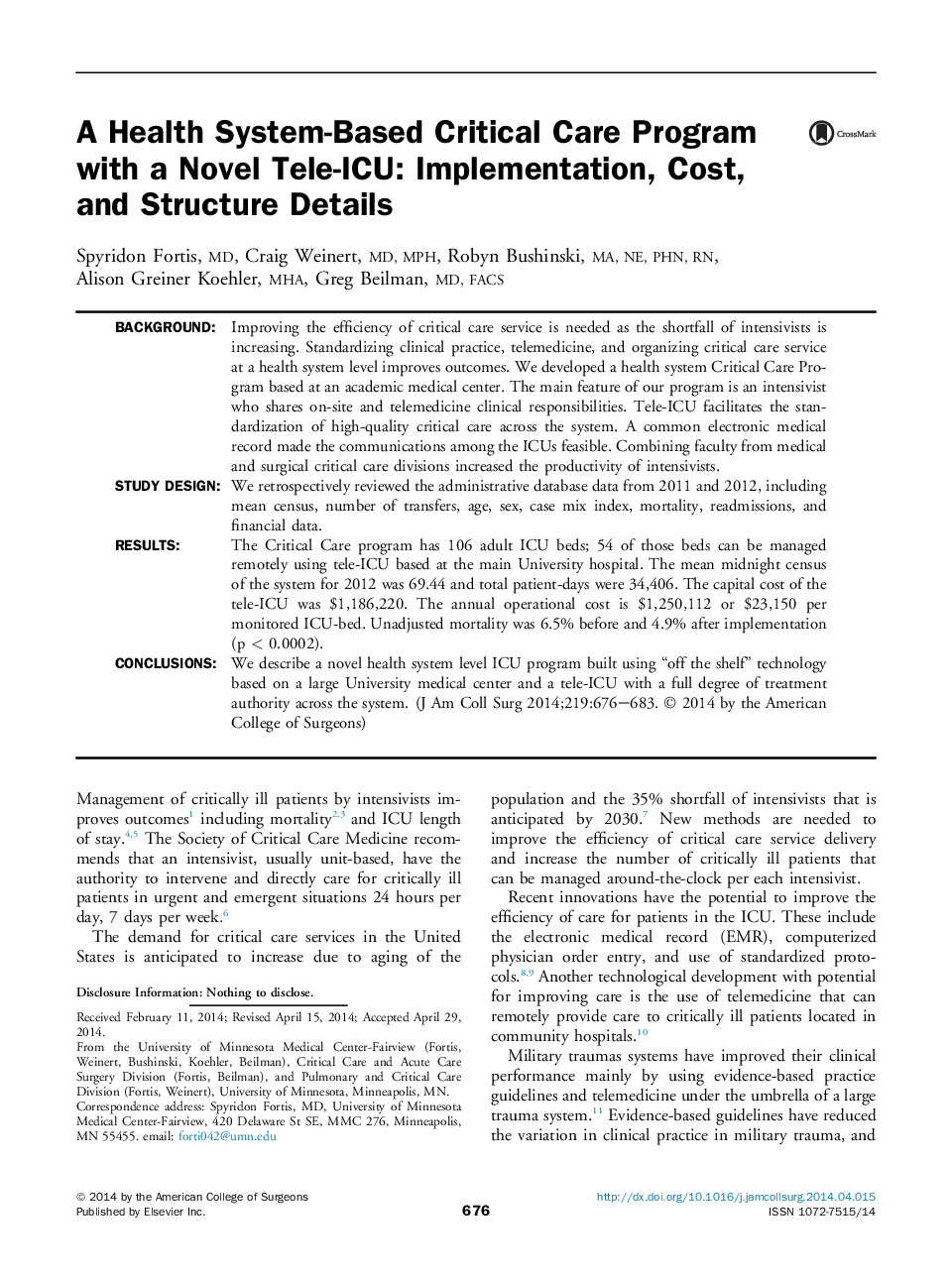| Article ID | Journal | Published Year | Pages | File Type |
|---|---|---|---|---|
| 4291484 | Journal of the American College of Surgeons | 2014 | 8 Pages |
BackgroundImproving the efficiency of critical care service is needed as the shortfall of intensivists is increasing. Standardizing clinical practice, telemedicine, and organizing critical care service at a health system level improves outcomes. We developed a health system Critical Care Program based at an academic medical center. The main feature of our program is an intensivist who shares on-site and telemedicine clinical responsibilities. Tele-ICU facilitates the standardization of high-quality critical care across the system. A common electronic medical record made the communications among the ICUs feasible. Combining faculty from medical and surgical critical care divisions increased the productivity of intensivists.Study DesignWe retrospectively reviewed the administrative database data from 2011 and 2012, including mean census, number of transfers, age, sex, case mix index, mortality, readmissions, and financial data.ResultsThe Critical Care program has 106 adult ICU beds; 54 of those beds can be managed remotely using tele-ICU based at the main University hospital. The mean midnight census of the system for 2012 was 69.44 and total patient-days were 34,406. The capital cost of the tele-ICU was $1,186,220. The annual operational cost is $1,250,112 or $23,150 per monitored ICU-bed. Unadjusted mortality was 6.5% before and 4.9% after implementation (p < 0.0002).ConclusionsWe describe a novel health system level ICU program built using “off the shelf” technology based on a large University medical center and a tele-ICU with a full degree of treatment authority across the system.
